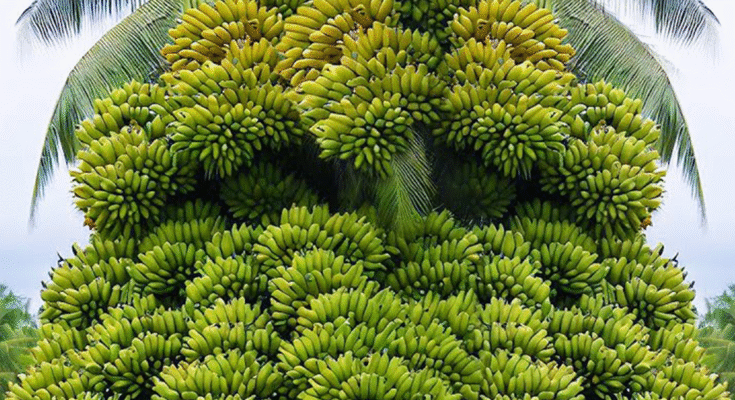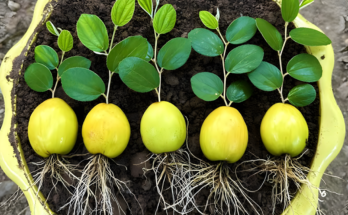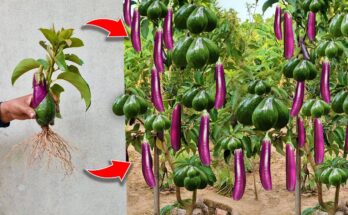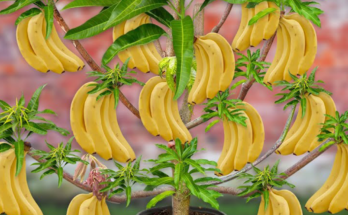Surprised With How to Grow Banana With Coconut: A Fruitful Tale Full of Strange Fruit
In the ever-evolving world of agriculture and horticulture, hybridization and creative farming techniques continue to surprise even the most seasoned growers. One such curious idea that has captured attention is the notion of growing bananas with coconuts — a concept that might sound odd at first, but when examined closely, reveals fascinating agricultural possibilities and results in a bounty of what some call “strange fruit.”
Let’s explore what this means, whether it’s truly possible, and why so many are surprised by what comes from combining banana and coconut cultivation in one shared environment.
The Banana and Coconut Connection
At first glance, bananas and coconuts don’t have much in common beyond being tropical fruits. Bananas grow on large herbaceous plants, while coconuts come from tall palm trees. However, both thrive in similar climates — warm, humid, and tropical regions with plenty of rainfall.
It’s important to clarify: you cannot literally grow a banana inside a coconut or create a “coconut-banana hybrid fruit” through natural means. Botanically, they belong to different families and cannot crossbreed. However, surprising things happen when you grow them together in the same space, or use parts of one plant to enhance the growth of the other.
Growing Bananas Using Coconuts: The Surprising Method
Some innovative farmers and home gardeners have begun experimenting with growing banana plants using coconut husks and coconut compost. The husk of the coconut, typically discarded as waste, is rich in organic matter and can retain moisture for long periods. This makes it an ideal mulch or base for planting banana suckers.
Here’s how the process often goes:
- Coconut Husk as Soil Conditioner
Coconut husks are shredded and mixed into the soil where banana plants will be grown. This creates a loose, well-aerated planting medium that retains moisture while allowing for good drainage. - Planting Banana Suckers with Coconut Shell Support
Banana suckers (young offshoots from a banana plant) are planted into soil beds lined with decomposed coconut shells. This gives the root system extra nutrients and helps hold moisture near the roots — something banana plants love. - Using Coconut Water as Fertilizer
Coconut water, rich in natural hormones like cytokinins, is sometimes poured around the base of banana plants. This natural tonic is said to encourage faster growth and healthier leaves. - Companion Planting of Banana and Coconut Trees
In some tropical farms, coconuts and bananas are grown in close proximity. Coconut palms provide filtered shade, reducing heat stress on banana plants, especially during dry seasons. Their root systems also pull up nutrients from deeper soil layers, which can benefit nearby banana plants.
Strange Fruit: What Grows in These Gardens?
What truly surprises many is the diversity of fruit that appears when bananas and coconuts are cultivated together. The term “strange fruit” doesn’t mean genetically bizarre or dangerous — rather, it refers to unexpected results and unusual combinations of flavors, textures, or even fruit appearance that come from this shared environment.
Here are some examples:
- Sweetness and Softness Boost
Bananas grown in coconut-enhanced soil tend to be sweeter and have a smoother texture. Farmers report that the minerals in coconut husks — especially potassium, magnesium, and phosphorus — enrich banana development. - Miniature Bananas and Odd Shapes
Some experimental growers have reported smaller, finger-sized bananas with unusual curves or multiple points — possibly due to changes in soil nutrient levels or environmental stress. - Intercropped Surprises
Many farmers use the banana-coconut combination garden as a place to grow other unusual tropical fruits like dragon fruit, jackfruit, or even exotic guava varieties. The shared nutrients and space-saving practices often result in bizarre but beautiful fruit clusters — some of which are hybrids, others just oddly shaped due to the dense planting.
The Benefits of This Method
What started as a quirky idea has evolved into a sustainable farming technique. Here’s why more growers are experimenting with this approach:
- Soil Health Improvement
Coconut compost improves the structure of the soil, making it more resistant to drought and erosion. - Water Retention
Bananas need a lot of water, and coconut mulch helps keep the root zone moist without constant irrigation. - Natural Pest Control
Some pests that target banana plants are repelled by compounds in coconut shells or benefit from reduced population due to mixed planting. - Biodiversity and Resilience
Farms that plant a variety of fruits alongside bananas and coconuts become more resilient to climate change, disease, and market shifts.
Is This the Future of Tropical Farming?
The world is changing fast, and food security is becoming a bigger concern every year. Strange-sounding experiments like growing bananas with coconuts may sound funny at first — but they reveal deeper truths about how nature works together when we support it properly.
From improved yields to sweeter fruits and healthier soil, the results are real — even if the fruit looks a little strange. In fact, that strangeness might be a sign of innovation and progress.
So next time you see a garden with banana trees and coconut palms side-by-side, don’t be surprised. You just might be looking at the future of sustainable, surprising agriculture.



